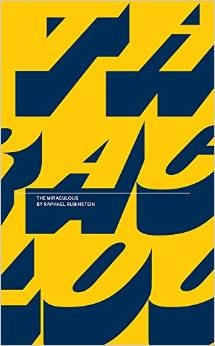A compact book of 50 numbered vignettes, The Miraculous, by New York-based poet and art critic Raphael Rubinstein, is a retelling of selected pivotal moments in postwar art. Each is written ‘blind’, so that the artist remains unnamed, though an index at the rear provides the list of artists. So a romantic retelling of Daniel Spoerri’s Topographie Anécdotée* du Hasard (An Anecdoted Topography of Chance, 1962) begins as follows: ‘One day in 1961, a slim, dark-haired young man is sitting at a table in his cheap Latin Quarter hotel room. Although he has with him neither paint nor canvas nor any of the traditional studio accoutrements, he is about to begin his next work of art.’ Spoerri documents everything on the table in front of him, in a moment that has now, itself, been canonised. Each parable is only a couple hundred words long, and orbits around the ‘miraculous’ moments in which chiefly conceptual works are realised, in an attempt to tell art history a different way – charmed, Perecian moments of revelation at the scale of a Lydia Davis story.
It might seem that writers on art should be struggling far less with ekphrasis – the art of translating one artform into another – when discussing the kind of conceptual work that can be described quite quickly, and with some accuracy. One can very literally repeat one of Yoko Ono’s instructional texts or Alison Knowles’s making of a salad. The ghost haunting the title is that of Bas Jan Ader, of course, and inevitably we are told the tragic tale of the artist’s death during In Search of the Miraculous (1975), in time-honoured weepy fashion, emphasising romance above all else, and prefaced by the fact that ‘recently he’s mailed out postcards that carry a photograph of him convulsed in tears. The caption reads: “I’m too sad to tell you.”’
Why should this make me bristle when it’s all essentially factually correct? The book is undoubtedly a sweet thing: a celebration of the Damascene moments that see artists breaking with existing forms, which do have an undeniable, transformative magic to them. For those who don’t know the works described, it might be a pleasurable experience to live art history though these fascinating protagonist-actors. I feel desperately uncharitable writing that the parablelike nature irks me so much, but it’s deeply invested in the cult of solo genius, and very, very cute. One short enough to relay in full here is number 37: ‘In 1979 an artist decides to shake hands with every employee of the New York City Sanitation Department. It takes her eleven months and two days to shake the hands of all 8,500 workers’. This is true, but somehow this important work, Touch Sanitation Performance (1979–80), by Mierle Laderman Ukeles, now appears less political, less invested in the economic, ideological and spiritual troubles of a city and a very large community, here transformed into a romantic solo struggle and personal endeavour, stripping Ukeles away from the context and the people that she sought to make visible and to whom she sought to give voice. This sort of practice is actually a time-honoured problem, rather than an experimental transformation. This book might not be aimed at me, and is perhaps intended more as a poetic, pic’n’mix reflection. However, in too many cases the artists appear far more toothless than they should; the sweets here taste too much of saccharin.
This article was first published in the January & February 2015 issue.
